In a world where classrooms are evolving faster than a kid can say “Wi-Fi,” edtech sales have emerged as the superhero of modern education. Imagine a realm where learning tools are as engaging as the latest video game and just as essential. That’s the magic of educational technology, and it’s reshaping how educators and students connect.
Table of Contents
ToggleOverview of Edtech Sales
Edtech sales represent a rapidly growing market influenced by digital transformation in education. This sector involves the sale of technology products designed to facilitate learning. Companies develop solutions that enhance student engagement and improve educational outcomes.
Sales strategies in edtech differ from traditional education sales. Solutions often require demonstration and engagement to showcase effectiveness. Prospective clients typically include school districts, universities, and individual educators evaluating resources. Decision-makers look for products with clear benefits, return on investment, and user-friendly interfaces.
Market trends show significant growth in various areas. For instance, the global edtech market is projected to reach $404 billion by 2025. Increased demand for remote learning tools, adaptive learning technologies, and learning management systems drives this expansion. These innovations cater to diverse learning needs from a more personalized approach.
Successful edtech sales involve strong relationships with clients. Building trust requires understanding unique challenges schools face. Tailored solutions are essential to address specific educational goals. Supporting potential customers with comprehensive training ensures successful implementation and usage.
Competitive analysis plays a vital role in edtech sales strategy. Companies must regularly assess market positioning against key players. Identifying gaps in features or customer satisfaction leads to opportunities for innovation and improvement. Staying ahead in technology trends enhances the capability of sales teams to respond effectively to evolving market demands.
Effective marketing further strengthens edtech sales efforts. Utilizing social media campaigns, insightful content, and targeted advertisements attracts attention. Demonstrating how products meet educational needs fosters interest and encourages inquiries. Establishing a solid online presence boosts brand visibility and credibility among educators.
Key Trends in Edtech Sales
Key trends are shaping the future of edtech sales. These trends reflect changes in educational delivery and innovative technologies in learning environments.
Growth of Online Learning Platforms
Online learning platforms gained significant traction recently. The demand for flexible and accessible education solutions drove this growth. According to projections, the global edtech market is set to reach $404 billion by 2025. Many businesses are investing in platforms that offer interactive and engaging content. Traditional institutions are partnering with online providers to enhance their offerings. These collaborations enable broader reach and inclusivity in education. Companies focused on online learning can capture attention through tailored marketing strategies, ultimately attracting more users.
Integration of AI and Analytics
Integration of AI and analytics represents a pivotal shift in edtech sales. Companies leverage AI to personalize learning experiences based on individual student needs. The capability to analyze data patterns helps businesses tailor their offerings effectively. Insights derived from analytics guide product development and marketing strategies. As a result, intuitive platforms can adapt to various learning styles. Automation streamlines administrative tasks, which allows educators to focus more on teaching. This trend not only improves user satisfaction but also boosts sales through demonstrated effectiveness.
Challenges in Edtech Sales
Edtech sales face multiple challenges that can hinder growth and success in this rapidly evolving market.
Market Saturation
Market saturation presents a significant hurdle. Many companies compete within the same niche, making differentiation essential. Saturation of products leads to price wars, which often diminish overall profitability. For example, in 2021, over 70% of edtech startups reported struggling to secure funding due to heavy market competition. Innovative features and clear value propositions can help companies stand out. Understanding target audiences increases chances of making effective connections with potential customers.
Customer Retention Issues
Customer retention poses another critical challenge. Retaining clients in a competitive landscape requires constant engagement and effective product updates. Many institutions face budget constraints, which can lead to annual contract cancellations. Moreover, educational institutions frequently shift priorities based on new trends, resulting in churn rates. In fact, data reveals that only 30% of users remain loyal to their edtech solutions over a five-year period. Establishing strong relationships through ongoing support can significantly improve retention rates. Regular feedback mechanisms also help align products with customer needs, ultimately enhancing loyalty.
Strategies for Successful Edtech Sales
Successful edtech sales hinge on a combination of relationship-building and effective digital marketing strategies. Utilizing these approaches enhances engagement and fosters growth in this rapidly evolving market.
Building Relationships with Educators
Establishing strong connections with educators fosters trust and opens pathways for collaboration. Initiating conversations through personalized outreach proves beneficial in understanding specific needs. Listening closely to feedback allows for tailored solutions that directly address challenges faced by educators. Attending educational conferences creates opportunities for face-to-face interactions, strengthening relationships and offering insights into market trends. Providing ongoing support encourages educators to share experiences, demonstrating commitment beyond the initial sale.
Leveraging Digital Marketing
Effective digital marketing amplifies brand visibility in the competitive edtech landscape. Prioritizing social media campaigns engages potential customers through relatable content. Creating informative blog posts positions the brand as a thought leader in the industry. Targeted advertisements, using data-driven insights, reach educators at various points in their purchasing journey. Developing engaging video content showcases product effectiveness and enhances understanding. Email marketing campaigns can also nurture prospects, driving them toward informed purchasing decisions by delivering value consistently.
Future Outlook for Edtech Sales
Forecasts predict the global edtech market will reach $404 billion by 2025. This significant growth hinges on the rising demand for remote learning tools and personalized education solutions. Online learning platforms expand rapidly, reflecting the desire for flexible educational opportunities. Many traditional institutions partner with online providers to enhance accessibility and inclusivity.
Innovations in AI and analytics play crucial roles in shaping future edtech sales. These technologies personalize learning experiences while simplifying administrative tasks for educators. As a result, user satisfaction improves alongside sales, demonstrating the effectiveness of these solutions.
Challenges persist for edtech sales, particularly market saturation. Numerous competitors complicate the process of differentiation, often leading to price wars that hurt profitability. Data indicates that over 70% of edtech startups faced funding difficulties in 2021 due to intense competition.
Retention presents another obstacle, with only 30% of users remaining loyal to their edtech solutions after five years. Budget constraints and shifting institutional priorities often drive this turnover. To counter these challenges, ongoing support and regular feedback mechanisms can strengthen client relationships and enhance customer loyalty.
Key strategies emerge for successful edtech sales. Relationship-building with educators fosters lasting trust and collaboration. Personalized outreach and active feedback contribute significantly to this effort. Participation in educational conferences also deepens these connections and reveals valuable market insights.
Digital marketing remains vital for growth. Engaging video content, targeted ads, informative blog posts, and email marketing enhance visibility and guide potential customers throughout their purchasing journeys. Prioritizing these strategies addresses market demands and positions edtech brands for future success.
The landscape of edtech sales is rapidly changing and presents both opportunities and challenges. As the demand for innovative learning solutions grows, so does the need for effective sales strategies that prioritize relationship-building and personalized outreach. Companies that adapt to these trends and leverage digital marketing will find themselves well-positioned in a competitive market.
With the integration of AI and analytics, the potential for enhancing user experiences is immense. However, the ongoing challenges of market saturation and customer retention must not be overlooked. By focusing on strong client relationships and continuous support, edtech brands can navigate this evolving landscape and thrive in the future.



